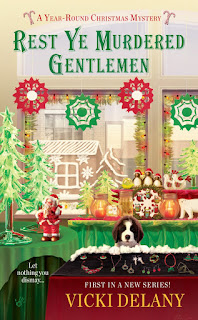These emeritus professors are quite the group. The youngest is probably between sixty and sixty-five, and the oldest is at least eighty. They are all scientists. I have two physicists, the former chair of the math department, an astrophysicist, and a geologist. They are all authors of multiple books, essays, studies, articles. These are people who know their way around a piece of scholarly writing. I feared at first that I'd have to deal with some big egos, and I must admit that none of these people suffer from low self-esteem. Yet all of them want to learn how to write effective fiction and are eager to hear what I have to say. And they all want homework at the end of each class!
There are only three classes to go. The professors have shared several stories and exercises by now, and really, all of them are quite good. They know their grammar and spelling, they all have an impressive vocabulary, and they all know how to take criticism. I'm wondering if I would be having such a positive experience if the class were full of retired English and literature professors. (I'm not wondering too hard. The answer is not on your life.)
Last week we discussed plotting. I always think long and hard before I try to tell anyone how to effectively plot a novel, because the truth is there is no hard and fast rule. However, it is helpful to know a few tricks to help you keep your story straight, and perhaps help you find your way when your story gets bogged down and you can't figure out how to find your way out of the swamp.
I came up with several plotting theories and methods to share. None of which I really use, but it's nice to have a few arrows in your quiver.
The late sci-fi author Algis Budrys suggests a seven point story structure.
It has:
- a character,
- in a situation,
- with a problem,
- who tries repeatedly to solve his problem,
- but repeatedly fails, (usually making the problem worse),
- then, at the climax of the story, makes a final attempt (which might either succeed or fail, depending on the kind of story it is), after which
- the result is “validated” in a way that makes it clear that what we saw was, in fact, the final result.
- The hero is confronted with a challenge,
- rejects it,
- but then is forced (or allowed) to accept it.
- He travels on the road of trials,
- gathering powers and allies, and
- confronts evil—only to be defeated.
- This leads to a dark night of the soul, after which
- the hero makes a leap of faith that allows him to
- confront evil again and be victorious.
- Finally, the student becomes the teacher.
- Write a one-sentence description of the novel.
- Expand to a paragraph of description of the novel, including one sentence each for the setup, the main conflict, the obstacles, and the wrap-up.
- A one-page summary sheet for each main character that reviews that character’s goals, conflict, motivation, and summarizes the story from his/her POV
- Create a brief plot synopsis using the sentences in step two and expanding each to its own paragraph
- Write about the story from the point of view of various characters- one page for main character and half a page for minor characters.
- Expand the one page synopsis to four pages.
- Develop expanded character charts and histories
- Map out each individual scene of the novel on a spreadsheet using one line per scene.
- Write the first draft of the novel.
I went over the three-act structure and the five-act structure, and my favorite plotting guideline, three disasters and an ending.
What I actually do after all this time in order to keep myself on track: I write a sentence about each scene on a 3x5 card, noting place, characters, and time. Then I arrange and rearrange them to see which scene sequence works out best.
Or, sometimes, I just wander around lost until I see a glimmer of light, then follow that light out of the forest.

















